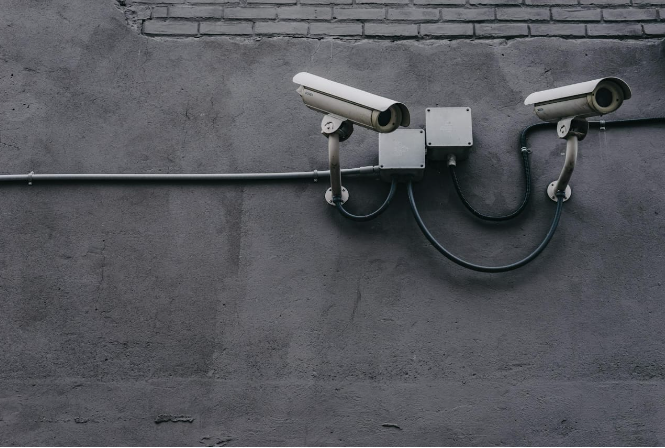In today’s world, keeping your business safe and secure is more crucial than ever. Whether it’s protecting physical premises, safeguarding digital assets, or ensuring the well-being of employees and customers, businesses face numerous security challenges. Implementing comprehensive security measures can prevent losses, enhance operational efficiency, and build trust with stakeholders. This article outlines various strategies to keep your business safe and secure.
Physical Security Measures
- Access Control Systems
- Keycard and Biometric Systems: Implementing access control systems such as keycards or biometric scanners helps restrict entry to authorized personnel only. This reduces the risk of unauthorized access and potential theft or damage.
- Visitor Management: Maintain a visitor log and issue temporary access badges to track who enters and exits the premises. This helps in monitoring and controlling access to sensitive areas.
- Surveillance Cameras
- Installation: Place surveillance cameras at strategic locations such as entrances, exits, parking lots, and critical areas within the facility. Ensure cameras cover all vulnerable points.
- Monitoring and Recording: Invest in high-quality cameras with recording capabilities. Regularly monitor and review footage to detect and respond to suspicious activities promptly.
- Security Personnel
- Hiring Professional Guards: Employ trained security personnel to patrol the premises, especially during non-business hours. They can act as a deterrent to criminal activities and respond to incidents immediately.
- Training Employees: Train employees on basic security protocols and emergency procedures. Encourage them to report any suspicious activities.
- Alarm Systems
- Intrusion Alarms: Install alarms that activate when unauthorized access is detected. These alarms can be connected to security services that can respond quickly.
- Fire and Smoke Alarms: Ensure that fire and smoke alarms are installed and regularly maintained. Conduct fire drills to prepare employees for emergency evacuations.
- Physical Barriers
- Fencing and Gates: Secure the perimeter of your property with fences and gates. Use sturdy locks and consider automated gates for controlled access.
- Reinforced Doors and Windows: Use reinforced doors and windows, especially in areas storing valuable assets. Install shatterproof glass and secure locks.
Digital Security Measures
- Cybersecurity Protocols
- Firewalls and Antivirus Software: Install and regularly update firewalls and antivirus software to protect against malware, viruses, and unauthorized access.
- Secure Networks: Use Virtual Private Networks (VPNs) and encrypted connections to secure data transmissions, especially when accessing the business network remotely.
- Access Controls
- Password Policies: Implement strong password policies requiring complex passwords that are changed regularly. Use multi-factor authentication (MFA) for added security.
- User Permissions: Assign user permissions based on roles and responsibilities. Ensure employees have access only to the data and systems necessary for their job functions.
- Data Protection
- Regular Backups: Perform regular data backups and store them securely, either offsite or in the cloud. This ensures data recovery in case of a breach or system failure.
- Encryption: Encrypt sensitive data both at rest and in transit. This protects information from being accessed or read by unauthorized parties.
- Employee Training
- Security Awareness Training: Conduct regular training sessions on cybersecurity best practices, such as recognizing phishing attempts, avoiding suspicious downloads, and safeguarding personal information.
- Incident Response Plans: Develop and communicate clear procedures for responding to security incidents. Ensure employees know whom to contact and what steps to take in case of a security breach.
Operational Security Measures
- Risk Assessment
- Regular Evaluations: Conduct regular risk assessments to identify potential security threats and vulnerabilities. Evaluate both physical and digital assets and update security measures accordingly.
- Third-Party Audits: Engage third-party security experts to audit your security protocols and provide recommendations for improvements.
- Policies and Procedures
- Security Policies: Develop comprehensive security policies covering physical security, cybersecurity, data protection, and employee conduct. Ensure these policies are communicated and enforced.
- Incident Reporting: Implement a clear incident reporting system to ensure that any security breaches or suspicious activities are promptly reported and addressed.
- Vendor and Partner Security
- Due Diligence: Conduct thorough due diligence on vendors and partners to ensure they adhere to your security standards. This includes verifying their cybersecurity practices and data protection measures.
- Contracts and Agreements: Include security requirements and clauses in contracts with vendors and partners. Regularly review these agreements to ensure compliance.
- Contingency Planning
- Business Continuity Plans: Develop and maintain a business continuity plan that outlines procedures for maintaining operations during a security incident or disaster. This should include backup sites, remote working capabilities, and communication strategies.
- Disaster Recovery Plans: Ensure you have a disaster recovery plan to restore critical systems and data swiftly following a security incident. Test and update this plan regularly.
Enhancing Customer and Employee Security
- Customer Data Protection
- Privacy Policies: Implement clear privacy policies outlining how customer data is collected, stored, and used. Ensure compliance with relevant data protection regulations.
- Secure Transactions: Use secure payment gateways and encrypt customer payment information to prevent data breaches and fraud.
- Employee Safety
- Workplace Safety Measures: Ensure the workplace is safe and secure by maintaining building integrity, providing adequate lighting, and ensuring emergency exits are accessible.
- Employee Support Programs: Offer support programs, such as employee assistance programs (EAPs), to help employees deal with stress or personal issues that could impact their performance and security awareness.
Leveraging Technology for Security
- Smart Technology
- IoT Devices: Use Internet of Things (IoT) devices for monitoring and security purposes, such as smart locks, sensors, and cameras. Ensure these devices are securely configured and regularly updated.
- Automation Systems: Implement automation systems for lighting, alarms, and access controls to enhance security and reduce human error.
- Artificial Intelligence (AI)
- AI Surveillance: Utilize AI-powered surveillance systems that can detect unusual activities and send alerts in real-time.
- Behavioural Analytics: Use AI and machine learning to analyse patterns and detect anomalies in user behaviour, helping to identify potential security threats.
Keeping your business safe and secure requires a multifaceted approach that includes physical security measures, robust cybersecurity protocols, and comprehensive operational practices. By implementing these strategies, you can protect your assets, ensure the safety of your employees and customers, and maintain the integrity of your business operations. Regular risk assessments, employee training, and leveraging advanced technologies are essential components of a proactive security strategy. In an ever-evolving threat landscape, staying vigilant and continuously improving your security measures is key to safeguarding your business.





